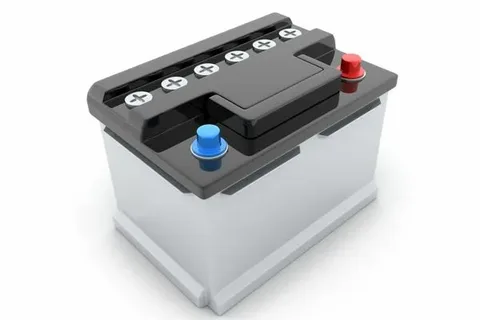U.S. Automotive Lead Acid Battery Market: Demand, Trends, and Outlook

Introduction
The United States Automotive Lead Acid Battery Market continues to grow steadily as lead acid batteries remain a widely used and cost-effective energy storage solution for automotive applications. These batteries are primarily used for starting, lighting, and ignition (SLI) functions in conventional vehicles, as well as for auxiliary power in hybrid and electric vehicles. Despite the rising adoption of lithium-ion batteries in EVs, lead acid batteries maintain strong market demand due to their affordability, reliability, recyclability, and robust performance in varying climatic conditions. They remain a staple in passenger vehicles, commercial fleets, two-wheelers, agricultural machinery, marine vehicles, and backup power systems. The U.S. market is projected to grow at a CAGR of around 4–6% over the forecast period, supported by increasing vehicle parc, replacement battery demand, and technological advancements in enhanced flooded batteries (EFB) and absorbent glass mat (AGM) batteries.
Market Drivers
High vehicle ownership across the U.S. remains a key driver for the automotive lead acid battery market, with millions of vehicles requiring periodic battery replacements. Growing demand for cost-effective and reliable automotive batteries supports lead acid usage, especially in passenger and commercial vehicles. The rise of stop-start vehicles is increasing adoption of AGM and EFB lead acid batteries for improved performance and longer lifecycle. Expanding used vehicle sales and rising vehicle maintenance trends contribute significantly to aftermarket battery demand. Lead acid batteries’ high recyclability rate of over 95% aligns with sustainability and circular economy initiatives, further boosting market acceptance. Additionally, strong demand from heavy commercial vehicles, farm equipment, and marine applications enhances market growth.
Market Challenges
Competition from lithium-ion batteries in EVs and hybrid vehicles may gradually impact long-term demand for lead acid batteries. Lead acid batteries have lower energy density and require more frequent replacement compared to advanced alternatives. Environmental and health concerns related to lead handling and disposal impose strict regulatory and compliance requirements. Performance limitations in extreme temperatures may affect battery life and efficiency. Increasing raw material and manufacturing costs can impact pricing, especially for premium AGM batteries. Additionally, supply chain disruptions affecting lead and other key materials may lead to market volatility.
Market Opportunities
Advancements in AGM and EFB technologies provide enhanced performance, longer lifespan, and improved charge acceptance, expanding opportunities in modern vehicles. Growing use of lead acid batteries as secondary power storage in hybrid vehicles and EVs provides new potential. Innovations in sealed, maintenance-free designs and vibration-resistant batteries offer strong growth prospects in off-road and commercial vehicle segments. Expansion of automotive aftermarket services and battery retail networks enhances accessibility. Strong focus on battery recycling and reuse supports sustainable growth and circular manufacturing opportunities. Partnerships between automakers, battery manufacturers, and recyclers will accelerate eco-friendly product development. Fleet electrification combined with auxiliary power needs offers additional opportunities for lead acid support batteries alongside lithium systems.
Regional Insights
The U.S. automotive lead acid battery market is widely supported by a strong automotive aftermarket, extensive vehicle parc, and well-established battery distribution networks. The Southern and Western U.S. exhibit high demand due to warmer climates causing faster battery wear and replacement needs. The Midwest and Northeast regions show strong aftermarket demand driven by winter conditions impacting battery performance, leading to frequent replacements. Increasing adoption of commercial and agricultural vehicles across states such as Texas, California, and Illinois further supports battery demand. The U.S. also maintains strong recycling infrastructure, supporting sustainable battery production and circular usage.
Future Outlook
The future of the U.S. Automotive Lead Acid Battery Market will be shaped by product innovation, sustainability, and evolving automotive technology. AGM and EFB batteries will gain a larger share as stop-start vehicles and modern vehicle electronics require higher performance. Recycling-focused manufacturing and green battery initiatives will grow as environmental regulations strengthen. Lead acid batteries will continue to coexist with lithium-ion solutions, especially in auxiliary and backup applications for EVs and hybrid vehicles. Smart battery management systems and IoT-enabled diagnostics may enhance performance and lifespan. While EV adoption will shift battery dynamics, the large existing vehicle parc and continuous replacement cycle will sustain lead acid demand for many years.
Conclusion
The United States Automotive Lead Acid Battery Market remains resilient despite increasing competition from advanced battery technologies. Lead acid batteries continue to be a vital part of the U.S. automotive ecosystem due to their reliability, affordability, and strong recycling value. Although performance limitations and environmental risks pose challenges, advancements in AGM and EFB systems, along with sustainability initiatives, are supporting market growth. With widespread vehicle usage, strong aftermarket demand, and ongoing innovations, the market is set for stable long-term expansion. Manufacturers focusing on durability, eco-friendly production, and enhanced performance solutions will maintain a strong market position.
